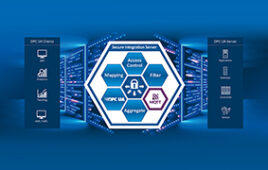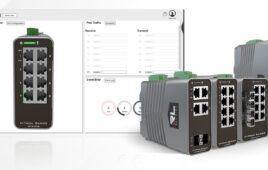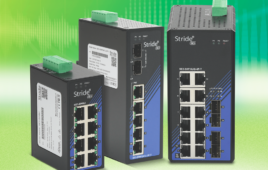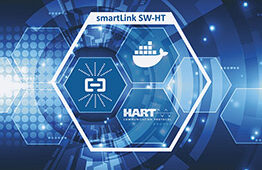ODVA announced that The EtherNet/IP Specification has been enhanced to allow vendors to bring the network to resource-constrained devices in-cabinet, including push buttons and contactors. Cost, size, and power restrictions have historically limited the usage of EtherNet/IP at the edge, where many nodes are still hardwired. However, the continued decrease in the cost of semiconductor chips has enabled increased connectivity of simple devices, as evidenced by the rapid expansion of the Industrial Internet of Things (IIoT). The sustained, strong growth of EtherNet/IP combined with accelerating IT/OT convergence has made it possible to deploy EtherNet/IP within cabinets on lower-level automation devices such as contactors and push buttons.
The inclusion of resource-constrained devices within cabinets on an EtherNet/IP network is enabled by recently published enhancements to The EtherNet/IP Specification including the physical layer In-Cabinet Profile for EtherNet/IP along with low overhead UDP-only resource-constrained EtherNet/IP communication. Resource requirements have been reduced via enhancements such as an IT friendly LLDP node topology discovery mechanism, auto-commissioning support, and auto-device replacement support. Additionally, a specification for a new select line circuit facilitates the efficient delivery of system wide sequential commands.
The EtherNet/IP in-cabinet bus solution reduces interface components through use of single pair Ethernet (IEEE Std 802.3cg-2019 10BASE-T1S) and reduces node cost via multidrop cabling that spans a single cabinet with one interface per device and one switch port that supports many devices. Cost is further reduced via cables that use composite network and control power to eliminate separate parallel runs. The select line for topology eliminates configuration switches by enabling discovery based on relative position and allows for direct connection with programming tools during assembly for parameterization. Assembly time is lowered by eliminating most wire or cable preparation with insulation displacement (piercing) connectors. Nodes will also be able to be replaced with compatible nodes of the same type during normal system operation without any engineering tools in a plug and play manner.
“Expanding the connectivity of EtherNet/IP to include devices with the smallest physical footprint and most limited hardware resources opens up tremendous opportunity for further digital transformation within automation at the edge. The ability to obtain diagnostic, prognostic, and asset identity information remotely from more devices will further drive down incidents of unplanned downtime and improve the efficiency of existing assets,” said Dr. Al Beydoun, President and Executive Director of ODVA. “The connection of resource-constrained devices to EtherNet/IP increases the value of existing networks for end users and reduces the need for secondary lower-level networks and associated gateways.”
The extension of EtherNet/IP for in-cabinet resource-constrained devices will dramatically increase the return-on-investment of adding the simplest of in-panel devices to the digital network. This will be made possible through reduced hardware requirements enabled by UDP-only EtherNet/IP communication, usage of single pair Ethernet, and shared in-cabinet external power and cabling. Adding low-level in-panel devices to the network will enable the benefits of additional remote diagnostics, asset information and parameterization capability, automatic node topology discovery, and plug and play device replacement. The lowered cost and improved value of these devices along with the ability to use one seamless network for both constrained and non-constrained devices is a clear win for automation end users. Visit odva.org to obtain the latest version of The EtherNet/IP Specification including the In-Cabinet Profile for resource-constrained EtherNet/IP devices.
ODVA
www.odva.org
Filed Under: IoT • IIoT • Internet of things • Industry 4.0, Ethernet — cables • hubs • switches, CONNECTIVITY • fieldbuses • networks, DIGITAL TRANSFORMATION (DX)




